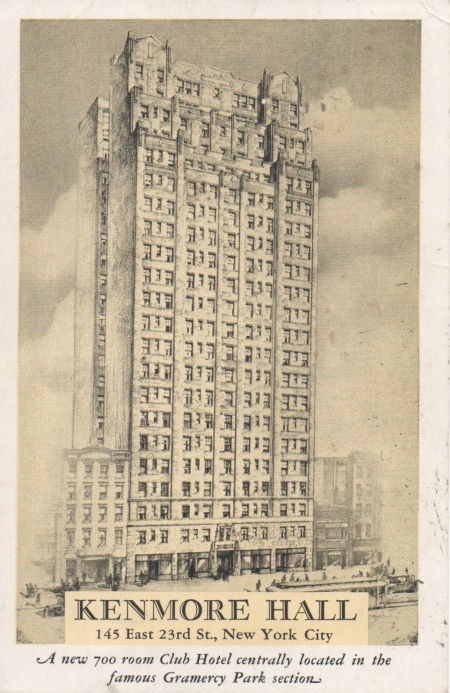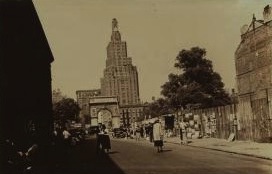Looking at the facade of the former Kenmore Hall Hotel, at 145 East 23rd Street, you can imagine the kind of place it was when it opened in 1929.
Like so many of the new hotels built in the Jazz Age city, it was a place for the city’s young smart set, with a roof garden, skylit lobby, and swimming pool.
It was also a hotel with a hidden literary rep. Shortly after the 22-story building opened, struggling young writer Nathanael West became its night manager.

 In the 1930s, West earned fame for his novels Miss Lonelyhearts (inspired by a real Brooklyn Eagle advice column to the lovelorn) and Day of the Locust.
In the 1930s, West earned fame for his novels Miss Lonelyhearts (inspired by a real Brooklyn Eagle advice column to the lovelorn) and Day of the Locust.
During his time on the Kenmore’s graveyard shift, West reportedly worked on Miss Lonelyhearts while letting writer friends like Dashiell Hammett, Edmund Wilson, and Maxwell Bodenheim crash in empty rooms.
 West died in 1940 in a California car accident with his wife, Eileen McKenney (of My Sister Eileen fame). In subsequent decades, Kenmore Hall changed hands; as East 23rd Street became seedier, so did the hotel.
West died in 1940 in a California car accident with his wife, Eileen McKenney (of My Sister Eileen fame). In subsequent decades, Kenmore Hall changed hands; as East 23rd Street became seedier, so did the hotel.
By the early 1990s it was an infamous SRO hotel where the city’s downtrodden lived in squalid quarters and drugs and crime were rampant.
Since 1999 the cleaned-up Kenmore is an SRO offering affordable housing—plus a little-known literary pedigree.
[Bottom photo: Emporis]








